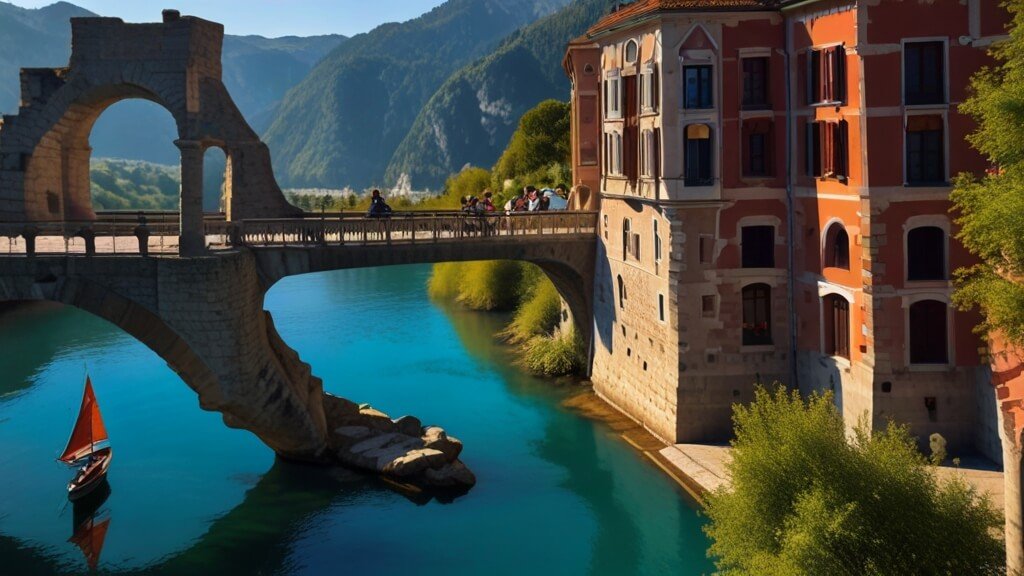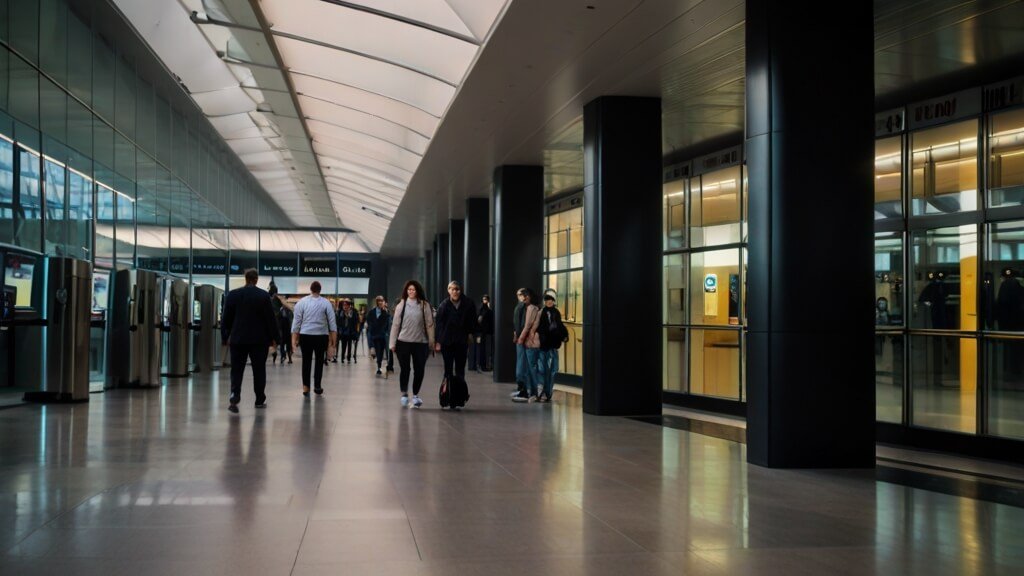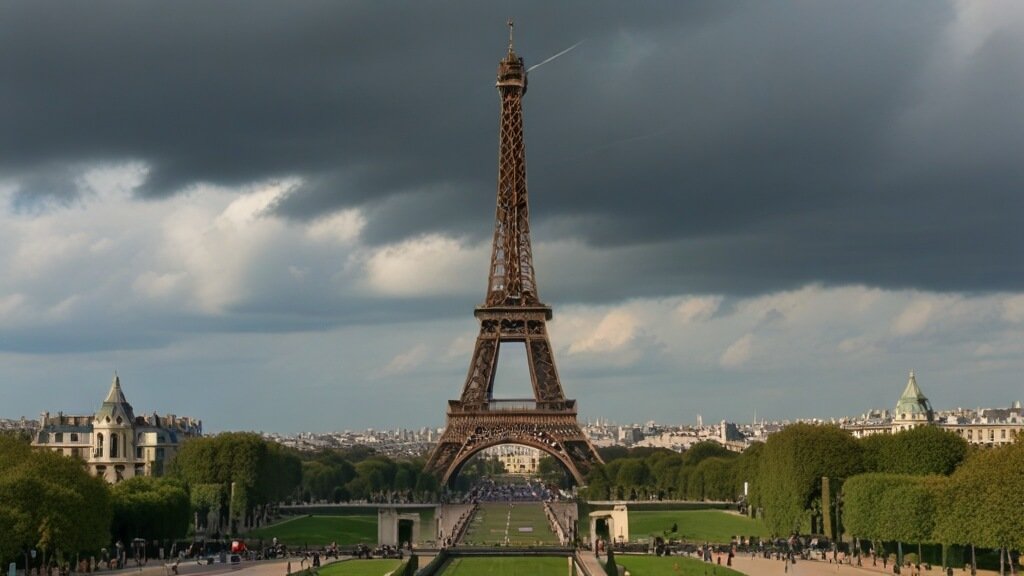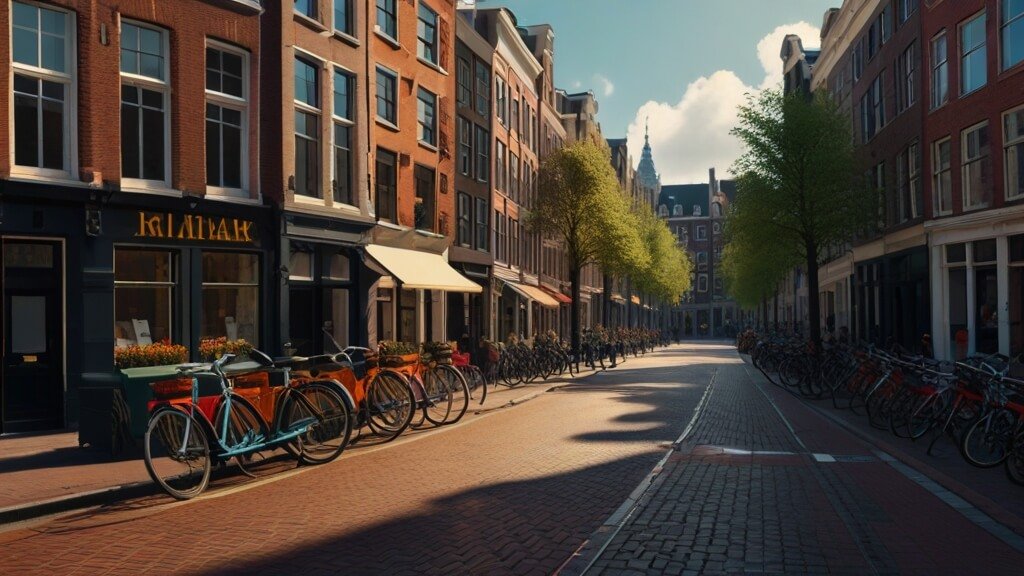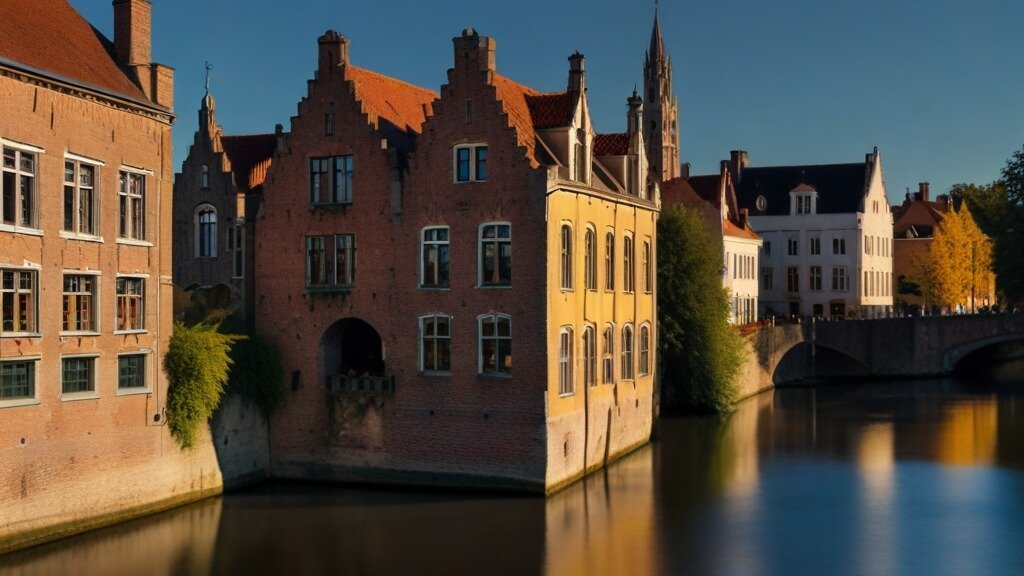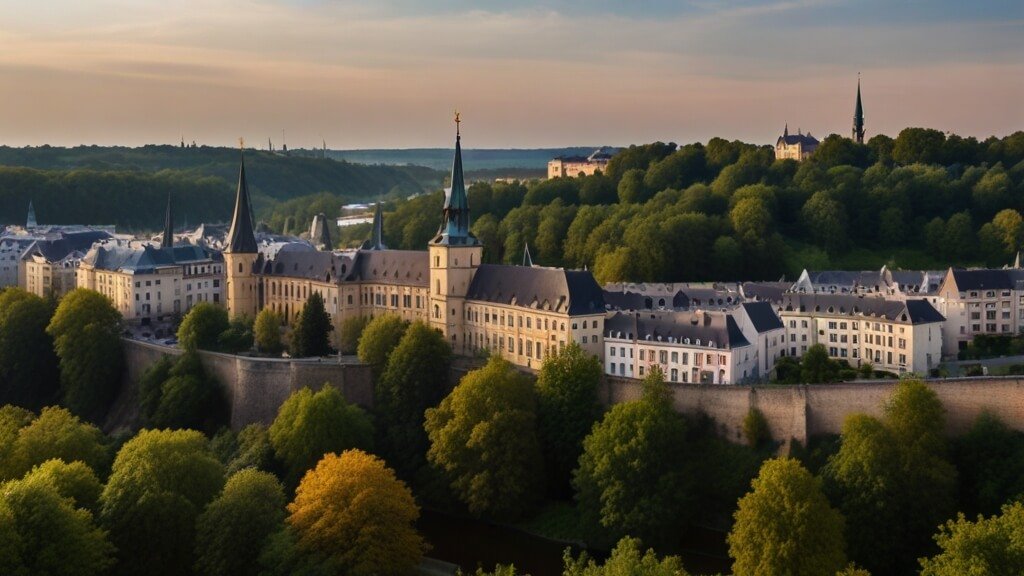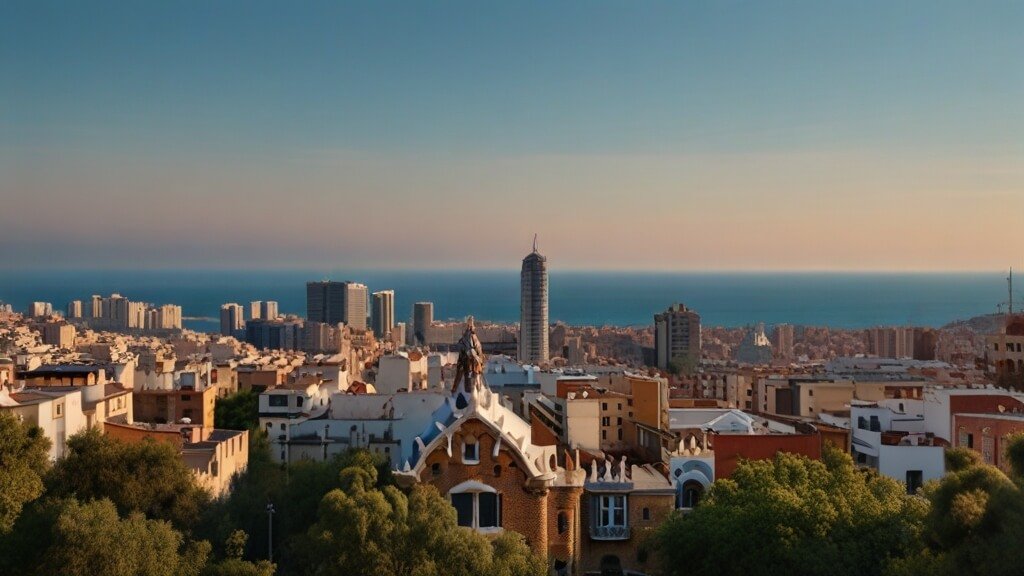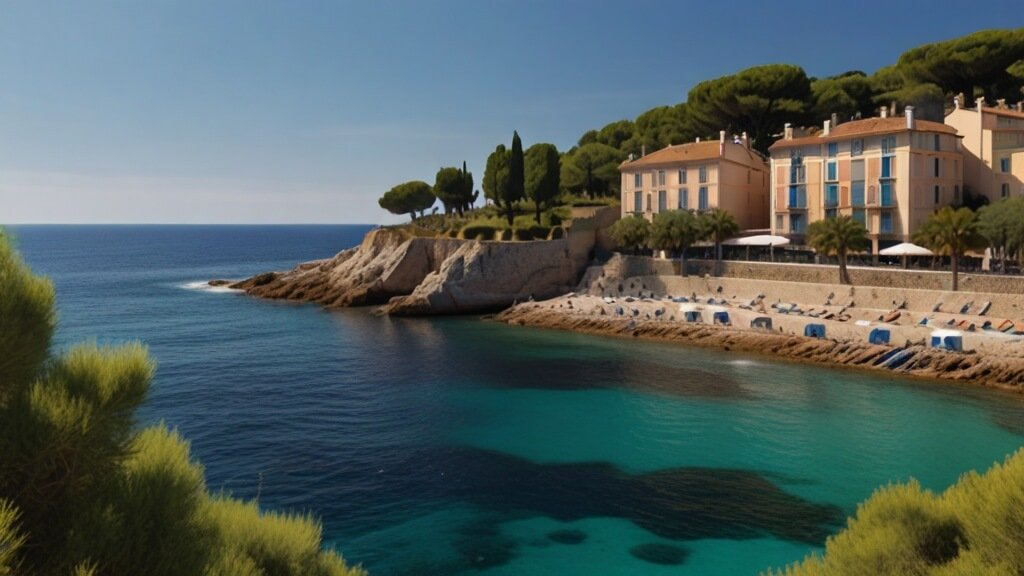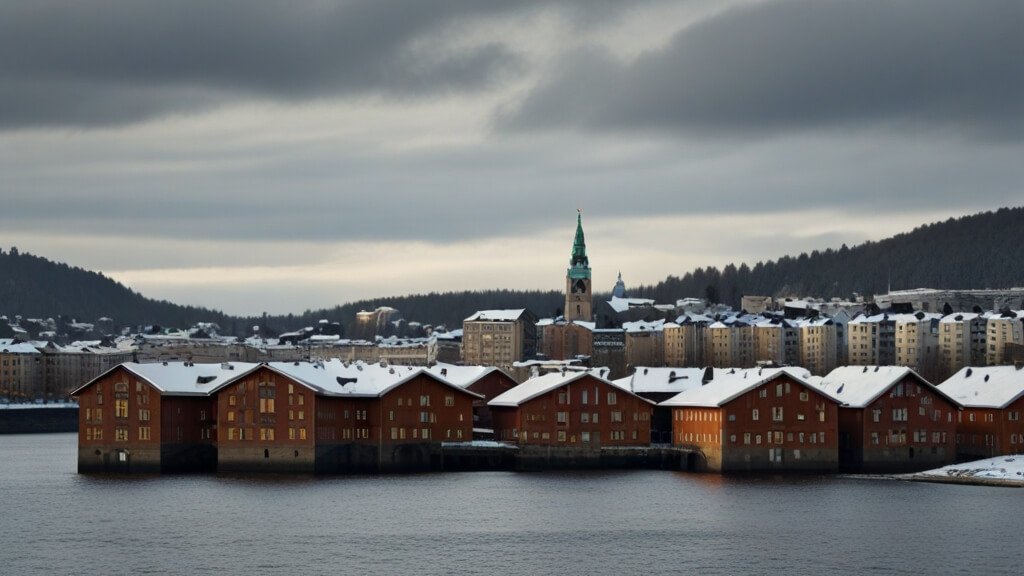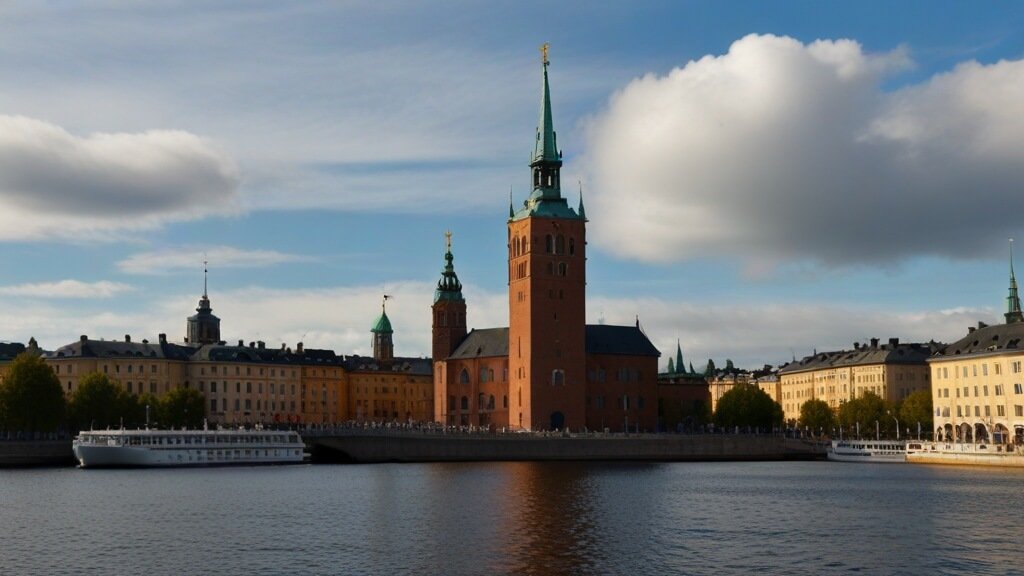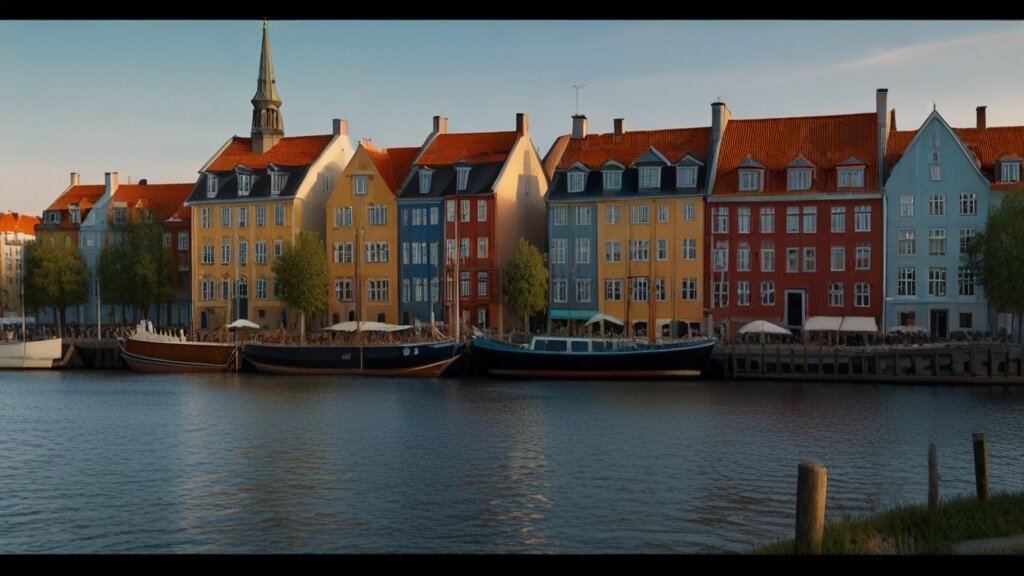Wanderlust Beckons!
Are you ready to embark on an unforgettable European adventure? The allure of historic cities, scenic landscapes, and diverse cultures awaits. But here’s the million-euro question: How Many Countries Should You Visit in Europe in 4 Weeks ? Buckle up, fellow traveler, because we’re about to chart a course through the Old World.
In this comprehensive guide, we’ll explore the optimal number of countries to explore, estimated costs, and insider tips to make the most of your limited time. Whether you’re a culture vulture, a foodie, or an adrenaline junkie, we’ve got you covered. Let’s dive in!
Let’s craft a thrilling day-by-day itinerary for your four-week European escapade. Buckle up, fellow adventurer! 🌍✨
Week 1: The Classics Unveiled
Day 1: Arrive in London
Arriving at London Airports
London boasts several airports, each with its own charm and proximity to the city center. Here are the key players:
Heathrow Airport (LHR):
- Distance to City: Approximately 15 miles (24 km) west of central London.
- Transport Options: The Heathrow Express train whisks you to Paddington Station in just 15 minutes. Alternatively, hop on the London Underground (Piccadilly Line) for a more budget-friendly ride.
- Tip: If you’re a Harry Potter fan, keep an eye out for Platform 9¾!
Once you’ve touched down, it’s time to explore the city. Here’s your step-by-step guide:
- Immigration and Customs:
- Follow the signs to passport control. Have your passport, visa (if required), and landing card ready.
- Collect your luggage from the carousel.
- Smile—you’re officially in London!
- Transport to the City Center:
- If you’re at Heathrow, hop on the Heathrow Express or the Tube.
- From Gatwick, catch the Gatwick Express or a bus.
- Stansted? Stansted Express or coach.
- Luton? Train or coach.
- London City? DLR or taxi.
- Southend? Train or taxi.
- Oyster Card or Contactless Payment:
- Grab an Oyster card (for discounted fares) or use your contactless debit/credit card for seamless travel on buses, Tubes, and trains.
- Mind the gap!
- Hotel Check-In:
- Drop your bags at your hotel.
- Freshen up—it’s time to hit the streets!
Day 2: London Icons
1. Big Ben (Elizabeth Tower)
- Location: Westminster
- Description: The Elizabeth Tower, affectionately known as Big Ben, stands tall beside the Houses of Parliament. Its iconic clock face and melodious chimes have echoed across the River Thames since 1859. Fun fact: Big Ben technically refers to the bell inside the tower, not the tower itself.
2. The Tower of London
- Location: Tower Hill
- Description: This historic fortress has witnessed centuries of intrigue, imprisonment, and crown jewels. Explore its medieval architecture, walk along the ancient walls, and meet the resident ravens. Legend has it that if the ravens ever leave, the kingdom will fall!
3. Buckingham Palace
- Location: St. James’s Park
- Description: The official residence of the British monarch, Buckingham Palace, exudes regal elegance. Witness the Changing of the Guard ceremony, admire the grand façade, and imagine the royal tea parties within.
4. The British Museum
- Location: Bloomsbury
- Description: A treasure trove of human history, the British Museum houses artifacts from every corner of the globe. From the Rosetta Stone to the Elgin Marbles, it’s a journey through time and culture.
5. The Shard
- Location: London Bridge
- Description: Piercing the sky like a glass shard, this modern skyscraper offers panoramic views of London. Visit the viewing platform for a breathtaking perspective, especially at sunset.
6. The Globe Theatre
- Location: Bankside
- Description: Step back to Shakespearean times at the reconstructed Globe Theatre. Catch a play in the open-air setting, just as audiences did during the Bard’s era.
7. St. Paul’s Cathedral
- Location: The City
- Description: Sir Christopher Wren’s masterpiece, St. Paul’s Cathedral, boasts a magnificent dome and a crypt housing historical figures. Climb to the Whispering Gallery for a secret acoustic experience.
8. The Millennium Bridge
- Location: Between St. Paul’s Cathedral and Tate Modern
- Description: A sleek pedestrian suspension bridge, the Millennium Bridge, connects the old and the new. It’s a favorite spot for photographers, especially when framed against St. Paul’s.
9. The London Eye
- Location: South Bank
- Description: A giant Ferris wheel on the Thames, the London Eye, offers unparalleled views of the city. Hop into a glass capsule and watch London unfold beneath you.
10. Covent Garden
- Location: Covent Garden
- Description: This lively area buzzes with street performers, boutique shops, and the Royal Opera House. Grab a coffee, people-watch, and soak in the atmosphere.
Remember, London’s icons are more than landmarks—they’re chapters in a story that spans centuries. So whether you’re sipping tea at the Tower or gazing at the Shard, let the city whisper its tales in your ear. 🇬🇧📸✨
Day 3: Paris Beckons
Morning:
-
- Guided Tour of Grand Opera: Start your day with a free guided tour of the Grand Opera (included with the Paris Pass). Explore the opulent interiors and learn about its fascinating history.
- Paris Aquarium: Immerse yourself in the underwater world at the Paris Aquarium. Discover marine life and enjoy the serene ambiance.
- Palais de Trocadero: Head to the Palais de Trocadero, which offers stunning views of the Eiffel Tower across the Seine River. Capture some memorable photos here.
Afternoon:
-
- Riverside Stroll: Take a leisurely walk along the Seine River. Enjoy the picturesque views of the bridges, historic buildings, and charming riverside cafes.
- Place du Tertre: Visit the Place du Tertre in Montmartre. This lively square is known for its artists, cafés, and vibrant atmosphere.
- Sacre-Coeur Basilica: Climb up to the Sacre-Coeur Basilica for panoramic views of Paris. The white-domed basilica is perched on a hill and offers breathtaking vistas.
- Sunset at Sacre-Coeur: Time your visit to catch the sunset from the steps of Sacre-Coeur. It’s a magical experience as the city lights up.
- Moulin Rouge: End your day with a visit to the iconic Moulin Rouge. While you may not catch a show, seeing the famous windmill is a must.
Evening:
-
- Explore the Neighborhood: Wander through the charming streets of Montmartre. Admire the artistic vibe, quaint shops, and cozy bistros.
- Notre-Dame Cathedral: If time permits, make your way to the Notre-Dame Cathedral. Marvel at its Gothic architecture and perhaps take a stroll along the nearby Île de la Cité.
Remember to check the hours of operation and ticket prices for each attraction, as they can change. Enjoy your third day in Paris! 🇫🇷✨
Week 2: Art, Canals, and Chocolates
Day 4: Amsterdam Arrival
1. Canals and Bridges
- Canals: Amsterdam’s iconic concentric canals—Herengracht, Keizersgracht, and Prinsengracht—weave through the city like liquid ribbons. Take a canal cruise to admire historic houses, houseboats, and picturesque bridges.
- Magere Brug (Skinny Bridge): A charming wooden drawbridge that spans the Amstel River.
2. Museums and Art
- Van Gogh Museum: Immerse yourself in Vincent van Gogh’s masterpieces. The museum houses the largest collection of his works, including “Starry Night” and “Sunflowers” .
- Rijksmuseum: Explore Dutch Golden Age art, including Rembrandt’s “The Night Watch.”
- Anne Frank House: Step into history at the hiding place where Anne Frank wrote her famous diary.
3. Parks and Green Spaces
- Vondelpark (Het Vondelpark): Amsterdam’s largest park, perfect for picnics, jogging, or people-watching. Enjoy open-air concerts at the Vondelpark Openluchttheater .
- Amsterdamse Bos (Amsterdam Forest): A vast green oasis with walking trails, bike paths, and even a goat farm.
4. Jordaan Neighborhood
- Jordaan: Wander through this bohemian neighborhood. Explore quirky boutiques, art galleries, and cozy cafés. Don’t miss the Noordermarkt on Saturdays.
5. Red Light District (De Wallen)
- De Wallen: Known for its red-lit windows, De Wallen is Amsterdam’s famous Red Light District. It’s also home to historic architecture, bars, and coffee shops.
6. Food and Drink
- Stroopwafels: Try these sweet, thin waffle cookies with caramel syrup.
- Herring: Sample raw herring with onions and pickles—the ultimate Dutch street food.
- Poffertjes: Miniature fluffy pancakes dusted with powdered sugar.
7. Bicycles Everywhere
- Cycling Culture: Amsterdam is a cyclist’s paradise. Rent a bike and explore the city like a local. Watch out for trams!
8. Tulips and Windmills
- Keukenhof Gardens: Visit in spring to see millions of blooming tulips.
- Zaanse Schans: A short trip from Amsterdam, this open-air museum showcases traditional windmills and wooden houses.
9. Coffee Shops and Cafés
- Coffee Shops: Note that “coffee shops” in Amsterdam often refer to places where you can legally buy and consume cannabis. If you’re looking for regular coffee, head to a café.
10. LGBTQ+ Scene
- Pride: Amsterdam hosts one of the biggest LGBTQ+ Pride celebrations in the world. The annual Canal Parade is a colorful spectacle.
Remember, Amsterdam is more than a city—it’s an experience. Whether you’re savoring a stroopwafel by a canal or admiring a Vermeer painting, let the spirit of Amsterdam embrace you. 🇳🇱✨
Day 5: Bruges Delight
1. A Medieval European Nexus
- Trade Hub: In medieval Europe, Bruges was a bustling nexus of trade. Merchants and traders from all corners of the continent converged here, creating a vibrant cultural melting pot.
- Art and Architecture: During the Renaissance, Bruges flourished as a center of art and architecture. Masters like Jan van Eyck and Hans Memling left their indelible marks on the city.
2. UNESCO World Heritage Site
- Preserved Character: Bruges’ historic center has retained its character through the centuries. It’s now designated a UNESCO World Heritage site, representing one of the best-preserved examples of a medieval European settlement.
- Strategic Location: First settled by Vikings in the early Middle Ages, Bruges’ strategic location on the North Sea facilitated its rise as a major commercial center.
3. Architectural Harmony
- Gothic and Neo-Gothic: The city seamlessly blends original Gothic structures with neo-Gothic buildings and facades constructed in the late 19th century. The result is a harmonious Old World atmosphere.
- Belfry: The imposing 13th-century belfry overlooking Market Square still stands tall. Adventurous visitors can climb its 366 steps for a panoramic view.
4. Religious and Cultural Traditions
- Procession of the Holy Blood: Bruges preserves its religious and cultural traditions. The Procession of the Holy Blood, inscribed by UNESCO on its List of the Intangible Cultural Heritage of Humanity, takes place each spring on Ascension Day. Officiants from the Brotherhood of the Holy Blood carry a vial believed to hold cloth stained with the blood of Christ through the streets.
5. A New Lease on Life
- Fortunes Reversed: By the mid-1800s, Bruges was one of the poorest cities in Europe. However, its fortunes changed again in the 20th century.
- Tourist Hub: Spared major damage during the World Wars, Bruges emerged as a thriving tourist hub. Visitors now flock from around the world to explore its historic canals, stone bridges, and picturesque streets.
So, whether you’re floating down Bruges’ canals alongside swans, touring its cobblestone streets in horse-drawn carriages, or sipping hot chocolate at sidewalk cafes, let the city’s timeless charm envelop you. 🇧🇪✨
Day 6: Luxembourg City
1. Historical Significance
- Medieval Origins: Luxembourg City has a rich history dating back to the Early Middle Ages. It was established around Luxembourg Castle, which still stands today.
- Strategic Location: Situated at the confluence of the Alzette and Pétrusse rivers, the city played a crucial role in trade and defense.
2. Architectural Gems
- Fortifications: The city’s historic fortifications, including the Bock Casemates, are a testament to its medieval past. These underground tunnels and chambers once served as defensive structures.
- Grand Ducal Palace: The official residence of the Grand Duke of Luxembourg, this palace showcases elegant architecture and hosts official ceremonies.
3. European Institutions
- EU Capital: Luxembourg City is one of the de facto capitals of the European Union. It houses several EU institutions, including the Court of Justice of the European Union and the European Parliament Secretariat.
- Financial Hub: The city has developed into a major banking and administrative center.
4. Cultural Scene
- Museums: Explore the National Museum of History and Art, which houses archaeological artifacts, art, and historical exhibits.
- Philharmonie Luxembourg: This modern concert hall hosts classical and contemporary music performances.
5. Green Spaces
- Parks: Luxembourg City boasts beautiful parks, such as Parc de la Pétrusse and Parc de Merl-Belair, where locals and visitors enjoy leisurely walks.
6. Quality of Life
- High Rankings: In the Mercer worldwide survey, Luxembourg was ranked first for personal safety and 18th for quality of living.
- Multicultural Population: The city’s population consists of 160 nationalities, with foreigners representing 70.4%.
7. Gateway to Europe
- Proximity: Luxembourg City is conveniently located within Western Europe, making it an ideal base for exploring neighboring countries.
- Picturesque Views: Don’t miss the panoramic views from the Kirchberg Plateau.
Whether you’re admiring the Gëlle Fra (Golden Lady) monument, savoring Luxembourgish cuisine, or attending a European Parliament session, Luxembourg City invites you to discover its unique blend of history, culture, and modernity. 🇱🇺✨
Week 3: Sun, Sea, and Sangria
Day 7: Barcelona Arrival
1. Historical Significance
- Roman Origins: Founded as a Roman city, Barcino, in the 1st century BC, Barcelona has a storied past. Roman walls, remnants of aqueducts, and ancient streets still exist.
- Medieval Capital: During the Middle Ages, Barcelona became the capital of the County of Barcelona. It played a pivotal role in the Crown of Aragon, a powerful confederation.
2. Architectural Gems
- Gothic Quarter (Barri Gòtic): Wander through narrow alleys, discover medieval squares, and admire Gothic architecture. The Barcelona Cathedral stands as a testament to this era.
- Modernisme (Art Nouveau): Barcelona is synonymous with the works of architect Antoni Gaudí. His masterpieces include:
- Sagrada Família: A monumental basilica with intricate facades and soaring spires.
- Park Güell: A whimsical public park adorned with colorful mosaics and organic shapes.
- Casa Batlló and Casa Milà (La Pedrera): Two residential buildings with undulating facades and imaginative interiors.
3. Cultural Scene
- Museums: Explore the Picasso Museum, home to an extensive collection of works by Pablo Picasso. The National Art Museum of Catalonia (MNAC) features Romanesque and Gothic art.
- Music and Dance: Attend a flamenco show or enjoy classical concerts at venues like the Palau de la Música Catalana.
4. La Rambla and La Boqueria Market
- La Rambla: A bustling tree-lined promenade, La Rambla stretches from Plaça de Catalunya to the Christopher Columbus Monument. Cafés, shops, and street performers line the way.
- La Boqueria: This vibrant food market offers fresh produce, seafood, and local delicacies. Don’t miss the colorful fruit stalls.
5. Beaches and Parks
- Barceloneta Beach: A lively urban beach where locals and tourists soak up the sun. Beach bars (chiringuitos) serve refreshing drinks.
- Parc de la Ciutadella: A green oasis with a boating lake, sculptures, and the Arc de Triomf.
6. Festivals and Events
- La Mercè: Barcelona’s biggest annual festival celebrates the city’s patron saint, La Mercè. Expect parades, concerts, and fireworks.
- Sónar Festival: A cutting-edge electronic music festival that draws international artists and music enthusiasts.
7. Culinary Delights
- Tapas: Sample an array of tapas—small, flavorful dishes—paired with local wines.
- Paella: Try this classic Spanish rice dish, often infused with saffron and loaded with seafood or other ingredients.
Barcelona’s energy, creativity, and Mediterranean charm make it a must-visit destination. Whether you’re marveling at Gaudí’s whimsy or sipping sangria by the sea, let the city captivate you. 🇪🇸✨
Day 8: Costa Brava Adventure
1. Costa Brava Parc Aventura
- Adventure Parks: Parc Aventura Platja d’Aro and Parc Aventura Pals are two adventure parks nestled in the privileged setting of Costa Brava. These parks cater to all ages, allowing you to choose your own multi-adventure experience.
- Activities: With over 250 adventure activities spread across 20 circuits of varying characteristics and difficulties, you’ll find plenty to keep your adrenaline pumping:
- Ziplines: Soar through the treetops on more than 2,000 meters of ziplines.
- Suspension Bridges: Cross between trees on over 30 types of suspension bridges.
- Acrobatic Games: Navigate 70 different acrobatic games.
- Climbing Walls: Test your climbing skills.
- Jump into the Void: For the bravest, experience a 13-meter freefall.
2. Safety First
- A Safe Adventure: At Parc Aventura, you’ll enjoy a unique and exciting experience with total security. The park provides safety equipment approved by European regulations.
- Smart Carabiners: These smart carabiners ensure you can’t accidentally become untied from the lifeline.
Costa Brava Adventure combines natural beauty, adrenaline, and safety, making it an ideal destination for thrill-seekers and nature lovers alike. So gear up, embrace the challenge, and create unforgettable memories in this stunning corner of Spain! 🌲🌊🎢
Day 9: French Riviera
1. Geography and Boundaries
- Location: The French Riviera stretches along the southeastern coast of France, bordering the Mediterranean Sea.
- Extent: There is no official boundary, but it is generally considered to be the coastal area of the Alpes-Maritimes department, extending from the rock formation Massif de l’Esterel to Menton, at the France–Italy border. Some sources place the western boundary further west around Saint-Tropez or even Toulon.
- Principality of Monaco: The French Riviera includes the Principality of Monaco, a semi-enclave surrounded by France on three sides.
2. Origins of the Name
- Riviera: The term “Riviera” originates from the ancient Ligurian territory of Italy, wedged between the Var and Magra rivers.
- Côte d’Azur: This nickname was given by France to the County of Nice after its annexation in 1860. The climate was similar to that of northern Italy, even in winter, with a sky as blue as its sea.
3. Historical Significance
- Winter Health Resort: The French Riviera began as a winter health resort for the British upper class in the late 18th century.
- Railway and Aristocrats: With the arrival of the railway in the mid-19th century, it became a playground for British, Russian, and other aristocrats, including Queen Victoria, Tsar Alexander II, and King Edward VII.
- Artists and Writers: In the 20th century, it attracted artists, writers, and wealthy Americans and Europeans, including Pablo Picasso, Henri Matisse, and Edith Wharton.
4. Modern Resort Area
- Tourist Destination: After World War II, the French Riviera became a popular tourist destination and convention site.
- Culture and Climate: It offers a unique blend of culture, art, and a pleasant Mediterranean climate.
Whether you’re strolling along the Promenade des Anglais in Nice, exploring the old town of Saint-Tropez, or trying your luck at the Monte Carlo Casino in Monaco, the French Riviera invites you to indulge in its timeless allure. 🇫🇷✨
Week 4: From Fjords to Fairytales
Day 10: Oslo Arrival
1. Historical Significance
- Viking Age Origins: During the Viking Age, the area was part of Viken. Oslo was founded as a city at the end of the Viking Age in 1040 under the name Ánslo and established as a trading place in 1048 by Harald Hardrada.
- Capital Status: Oslo became the capital under Haakon V of Norway around the year 1300.
2. Architectural and Cultural Highlights
- Gothic Architecture: The city boasts a blend of Gothic and neo-Gothic architecture. Notable landmarks include the Oslo Cathedral and the Akershus Fortress.
- Modernisme (Art Nouveau): Oslo is synonymous with architect Antoni Gaudí’s masterpieces, including the Sagrada Família, Park Güell, and Casa Batlló.
3. Economic and Maritime Hub
- Economic Center: Oslo is the economic and governmental center of Norway. It is a hub for trade, banking, industry, and shipping.
- Maritime Industries: The city plays a crucial role in maritime industries and trade in Europe.
4. Parks and Recreation
- Frogner Park: Home to the Vigeland Sculpture Park, which features over 200 sculptures by Gustav Vigeland.
- Holmenkollen: The famous ski jumping hill and museum offer panoramic views of the city.
5. Quality of Life
- High HDI: Oslo has a very high Human Development Index (HDI) and is known for its quality of life.
- Cultural Scene: The city hosts major museums, theaters, and cultural centers.
Whether you’re exploring the Munch Museum, enjoying the waterfront, or savoring Norwegian cuisine, Oslo invites you to experience its vibrant blend of history, culture, and modernity. 🇳🇴✨
Day 11: Stockholm Sights
1. Explore Old Town Stockholm: Gamla Stan
- Colorful Buildings: Dating from the 1200s, Gamla Stan (Old Town) is a living, breathing museum. Its colorful buildings, narrow winding streets, and historic squares transport you back to medieval times.
- Stortorget: The main public square in Gamla Stan, surrounded by cafés, restaurants, and boutique shops.
- Guided Walking Tours: To ensure you see all the main points of interest and learn about their historic significance, consider taking a guided walking tour of Stockholm Old Town.
2. Vasa Museum
- Seafaring Past: The Vasa Museum relives Sweden’s seafaring past. It houses the Vasa, a 17th-century warship that sank on its maiden voyage and was salvaged centuries later. The museum showcases the ship’s impressive size and intricate carvings.
3. Stockholm Boat Tours
- Get Your Bearings: Aboard a Stockholm boat tour, you’ll get a unique perspective of the city. Cruise through the archipelago, passing islands, bridges, and historic landmarks.
4. ABBA The Museum
- Be a Star: ABBA The Museum celebrates the iconic Swedish pop group ABBA. Immerse yourself in their music, costumes, and memorabilia. You can even sing along with holographic band members!
5. Djurgården
- Stroll and See the Sights: Djurgården is an island with a mix of green spaces, museums, and attractions. Take a leisurely stroll, visit the Skansen Open-Air Museum, and explore the beautiful parkland.
6. Royal Palace (Sveriges Kungahus)
- Tour the Royal Palace: Visit the official residence of the Swedish monarch. Explore the opulent state rooms, the Royal Chapel, and the changing of the guard ceremony.
7. Fotografiska: Stockholm’s Photography Museum
- Art and Creativity: Fotografiska is a contemporary photography museum. It hosts rotating exhibitions by renowned photographers from around the world.
8. Stockholm City Hall (Stadshuset)
- Historic Landmark: Stockholm City Hall is an architectural gem. It hosts the Nobel Prize banquet each year. Climb the tower for panoramic views of the city.
9. Nationalmuseum
- Fine Arts: The National Museum of Fine Arts (Nationalmuseum) houses an extensive collection of European art, including works by Rembrandt, Rubens, and Goya.
10. Moderna Museet
- Contemporary Art: Moderna Museet focuses on contemporary and modern art. It features works by Picasso, Dalí, and other influential artists.
Stockholm’s blend of history, culture, and natural beauty makes it a captivating destination. Whether you’re exploring museums, savoring Swedish cuisine, or enjoying the waterfront, the city invites you to create lasting memories. 🇸🇪✨
Day 12: Copenhagen Charm
1. Historical Significance
- Viking Age Origins: Originally a Viking fishing village established in the 10th century near what is now Gammel Strand, Copenhagen became the capital of Denmark in the early 15th century.
- Regional Power Center: From the 17th century, it grew as a regional center of power, with institutions, defenses, and armed forces.
2. Architectural and Cultural Highlights
- Gothic and Neoclassical: Copenhagen blends Gothic and neo-Gothic architecture. Notable landmarks include:
- Christiansborg Palace: The seat of the Danish Parliament and Prime Minister’s Office.
- Tivoli Gardens: A historic amusement park with beautiful gardens and entertainment.
3. Islands and Bridges
- Zealand and Amager: Copenhagen is spread across the islands of Zealand and Amager.
- Øresund Bridge: The Øresund Bridge connects Copenhagen to Malmö, Sweden, by rail and road.
4. Cultural Hub
- Danish Golden Age: During the union with Sweden and Norway, Copenhagen flourished as the cultural and economic center of Scandinavia for over 120 years.
- Royal Theatre and Royal Academy of Fine Arts: These institutions were founded during the Danish Golden Age.
5. Quality of Life
- HDI and Quality of Living: Copenhagen has a very high Human Development Index (HDI) and is known for its quality of life.
- Cultural Scene: The city hosts major museums, theaters, and cultural events.
Whether you’re exploring the historic streets of Gamla Stan, enjoying a canal tour, or savoring Danish cuisine, Copenhagen invites you to experience its rich heritage and modern charm. 🇩🇰✨
Remember, this itinerary is a canvas—you can add your own brushstrokes. Bon voyage, intrepid traveler! 🗺️✈️
Frequently Asked Questions (FAQs) About How Many Countries Should You Visit in Europe in 4 Weeks ?
| Question | Answer |
|---|---|
| Is Europe safe? | Europe is generally safe for travelers. Exercise normal precautions and be aware of your surroundings. |
| When is the best time to visit Europe? | The best time depends on your preferences. Summer (June to August) is popular, but consider spring (April to June) or fall (September to October) for fewer crowds. |
| How many days are enough to visit Europe? | It varies, but 4 weeks (28 days) allows for a comprehensive experience. |
| Is 4 weeks long enough for Europe? | Yes, 4 weeks is a good duration to explore multiple countries and regions. |
| How many countries should I visit in Europe in 4 weeks? | Aim for 4-6 countries to strike a balance between exploration and depth. |
| What is the best way to see Europe in 4 weeks? | Plan an itinerary that combines cities, countryside, and cultural highlights. |
| How should I get around Europe? | Trains, buses, and flights are common. Consider a Eurail pass for train travel. |
| Do I need a visa to go to Europe? | It depends on your nationality and the countries you plan to visit. Check visa requirements in advance. |
| Is Europe expensive? | Costs vary, but budget for accommodations, meals, transportation, and attractions. |
| Is $10,000 enough for 4 weeks in Europe? | $10,000 can cover a comfortable trip, but adjust based on your travel style. |
| What is the average cost of a 4-week trip to Europe? | It varies, but a mid-range budget might be $3,000-$5,000 per person. |
| What currency is used in Europe? | The Euro (EUR) is widely used, but some countries have their own currencies. |
| Do most people speak English in Europe? | English is commonly spoken, especially in tourist areas. Learn basic phrases for each country. |
| How do I visit Europe on a budget? | Opt for budget accommodations, use public transportation, and eat at local eateries. |
| What are some hidden gems in Europe worth visiting? | Consider lesser-known destinations like Ghent (Belgium), Ljubljana (Slovenia), or Porto (Portugal). |
| What are the top-rated tours in Europe? | Popular tours include city walking tours, food tours, and day trips to nearby attractions. |
| How can I travel around Europe on a budget? | Use budget airlines, book in advance, and explore free or low-cost attractions. |
| What scams should I look out for in Europe? | Be cautious of pickpockets, fake petitions, and overpriced taxis. |
| What resources can help me plan my Europe trip? | Use travel blogs, guidebooks, and online forums for tips and recommendations. |
| How can I make the most of my 4 weeks in Europe? | Prioritize must-see attractions, but also leave room for spontaneity and local experiences. |
Remember to tailor your trip based on your interests and preferences. Happy travels! 🌍✈️
Pre-trip checklist for your Europe travel
Clothing (All Seasons)
- Basics:
- Underwear and socks (pack extra)
- T-shirts and blouses
- Jeans or trousers
- Lightweight jacket or cardigan
- Comfortable walking shoes
- Pajamas
- Swimwear (if applicable)
- Weather-Appropriate Clothing:
- Warm layers (sweaters, thermals)
- Waterproof jacket or windbreaker
- Scarf, hat, and gloves (for colder months)
- Sun hat and sunglasses (for warmer months)
- Footwear:
- Comfortable walking shoes (break them in before your trip)
- Sandals or flip-flops (for warm weather)
- Hiking boots or sturdy sneakers (if you plan to hike)
- Dressier Outfits:
- Dress or collared shirt (for evenings out)
- Nice shoes (optional)
Additional Miscellaneous Items
- Travel Essentials:
- Passport and photocopies
- Travel insurance documents
- Visa (if required)
- Credit/debit cards and some cash (Euros are widely accepted)
- Universal power adapter
- Portable charger
- Toiletries and Personal Care:
- Toothbrush and toothpaste
- Shampoo and conditioner (travel-sized)
- Soap or body wash
- Razor and shaving cream
- Hairbrush or comb
- Sunscreen and lip balm
- Prescription medications
- Electronics:
- Smartphone and charger
- Camera and extra memory cards
- E-reader or tablet
- Headphones
- Miscellaneous:
- Travel pillow and eye mask
- Travel-sized laundry detergent (for handwashing)
- Reusable water bottle
- Daypack or small backpack
- Travel locks for your luggage
Hiking Items (If Applicable)
- Hiking Gear:
- Lightweight hiking pants or leggings
- Moisture-wicking base layers
- Hiking socks
- Sturdy hiking shoes or boots
- Hat and sunglasses
- Trekking poles (optional)
- Day Hike Essentials:
- Trail map or GPS device
- First aid kit
- Snacks and water
- Multi-tool or pocketknife
- Lightweight rain cover or poncho
Estimated Costs (for Reference)
Let’s break down the financial side of your journey. Remember, these are approximate figures, and prices can vary based on your travel style:
| Category | Estimated Cost (Per Person) |
|---|---|
| Transportation | €800–€1,200 |
| Accommodation | €1,200–€2,000 |
| Food & Drinks | €600–€1,000 |
| Activities & Tours | €500–€800 |
Remember to adjust these estimates based on your travel style and preferences. Bon voyage! 🌍✈️
Bon Voyage! 🌍✈️
As you embark on your European adventure, remember that this continent is a tapestry of history, culture, and natural beauty. Whether you’re sipping coffee in a Parisian café, hiking the Swiss Alps, or exploring the ancient ruins of Rome, each moment will be etched in your memory.
Here’s your call to action:
- Book Your Trip: Don’t wait—start planning your 4-week European journey. Research flights, accommodations, and must-see attractions. The Eiffel Tower, the Colosseum, and the fjords of Norway await!
- Share the Excitement: Spread the word! Share this article with fellow travelers, friends, and family. Let them join in the anticipation and inspiration.
- Leave a Comment: Have questions or travel tips? Leave a comment below. We’d love to hear from you!
- Subscribe: Subscribe to our newsletter for more travel inspiration, insider tips, and exclusive deals. 💌
Remember, Europe is not just a destination—it’s an experience waiting to unfold. Pack your bags, embrace the unknown, and let the adventure begin! 🇪🇺✨

